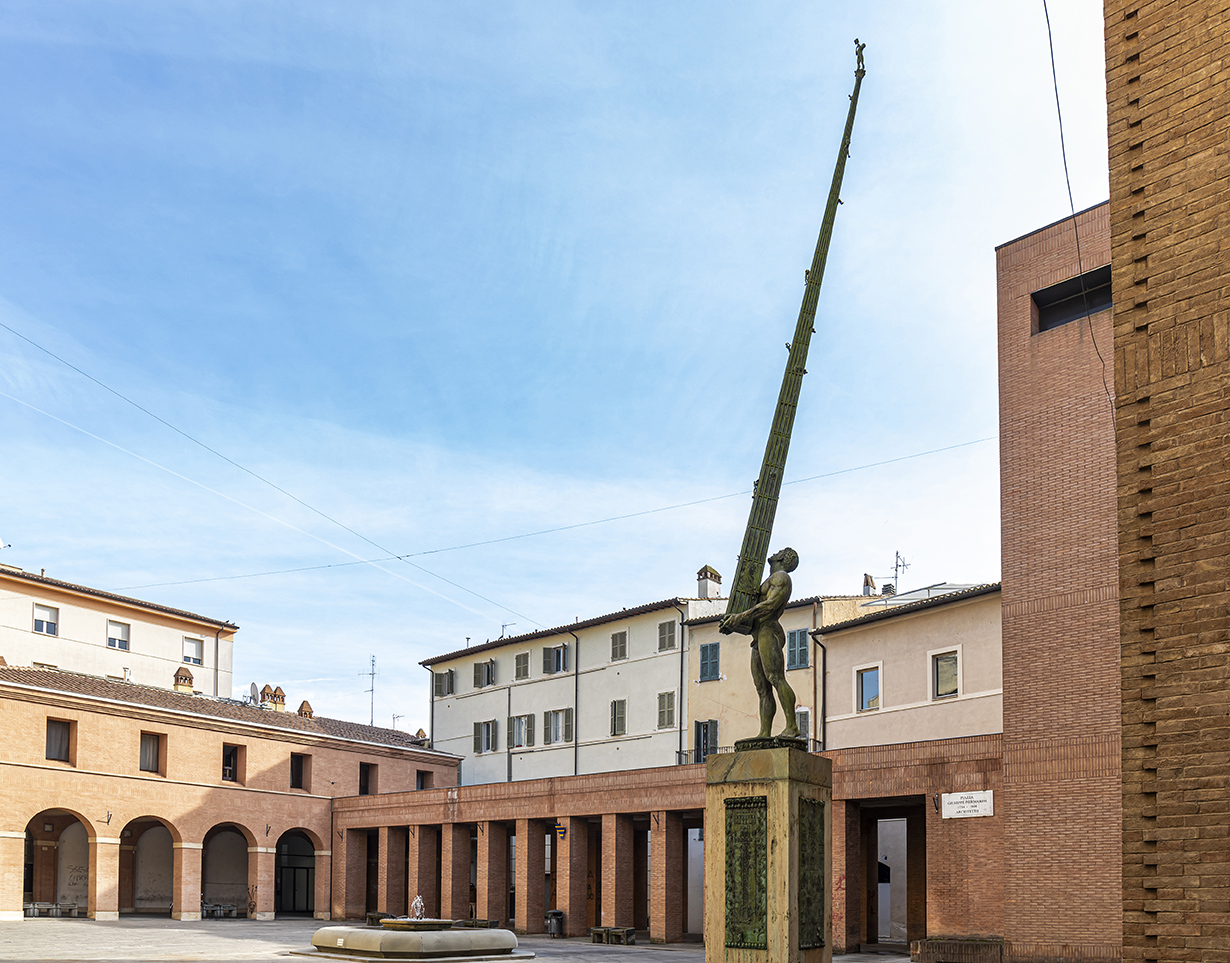More Than Just the Twelve Labours…
This striking monument honours Giuseppe Piermarini, the famous architect from Foligno who designed Milan’s Teatro alla Scala. Hercules, the Greek hero, symbolises not only physical strength but also intellectual ingenuity—a fitting tribute to Piermarini and the resilience of Foligno’s people after the bombing that destroyed the Apollo Theatre, which once stood in this square.

The bronze decorations at the base of the sculpture weave together classical mythology and Piermarini’s legacy. Pausing at this statue invites reflection on how culture and creativity leave an enduring mark on history.
Play and discover special content about this work
Answer the question correctly and unlock special content on this work.
What is Giuseppe Piermarini’s most famous architectural feat?
A
The Colosseum
B
Palazzo Spada in Rome
C
Teatro alla Scala in Milan
Continue visiting
As you walk along Corso Cavour towards Porta Romana, you’ll find a stumbling stone on the right at Via del Campanile, 13.
Beyond Porta Romana, outside the city walls, you’ll discover two more stumbling stones along Viale Mezzetti.
Another stumbling stone awaits in Piazza della Repubblica.


